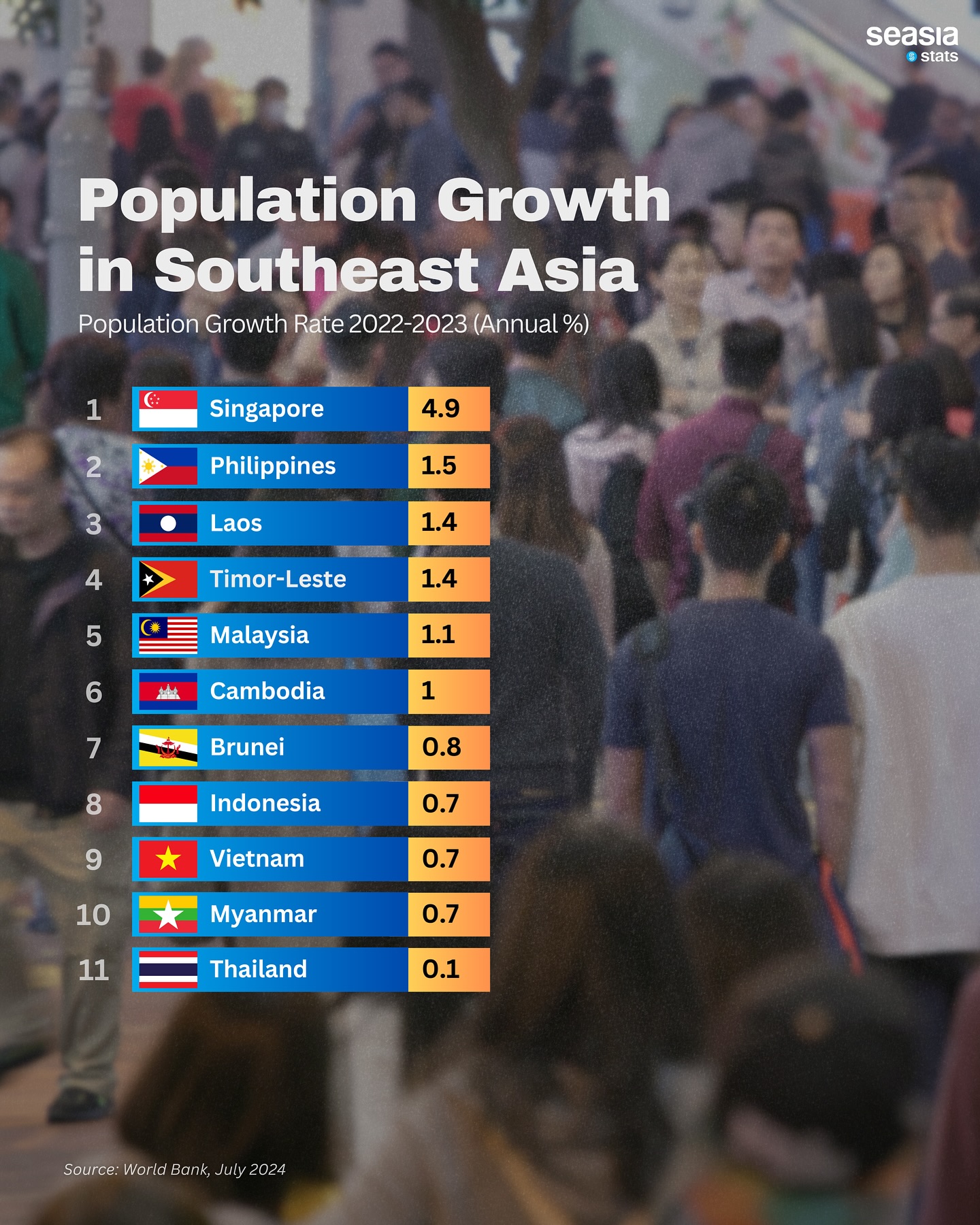The population growth rates in Southeast Asia show a remarkable diversity, with Singapore leading the way. Here is an overview of the annual population growth rates from mid-2022 to mid-2023:
Population Growth Rate (Annual %)
- Singapore: 4.9%
- Philippines: 1.5%
- Laos: 1.4%
- Timor-Leste: 1.4%
- Malaysia: 1.1%
- Cambodia: 1.0%
- Brunei Darussalam: 0.8%
- Indonesia: 0.7%
- Viet Nam: 0.7%
- Myanmar: 0.7%
- Thailand: 0.1%
Singapore's Surge in Population
Singapore recorded the highest population growth rate in Southeast Asia between mid-2022 and mid-2023, with a notable increase of 4.9%. According to the World Bank and the Singapore Department of Statistics, this surge is primarily due to a significant influx of new immigrants. This substantial growth highlights Singapore's continuing appeal as a destination for expatriates and skilled workers.
Despite this rapid growth, Singapore's population remains relatively small at 5.9 million, making it the third smallest in Southeast Asia. This contrasts with its high growth rate, underscoring the impact of immigration policies and the country's economic attractiveness.
Diverse Growth Rates Across the Region
While Singapore saw the fastest population increase, other countries in the region experienced more modest growth. The Philippines (1.5%), Laos (1.4%), and Timor-Leste (1.4%) also saw significant increases in their populations. Malaysia followed with a growth rate of 1.1%, and Cambodia with 1.0%.
Countries like Brunei Darussalam, Indonesia, Viet Nam, and Myanmar each had a growth rate of 0.7%. These rates reflect steady, albeit slower, population increases.
Thailand's Minimal Growth
On the other end of the spectrum, Thailand experienced the slowest population growth rate in Southeast Asia, at just 0.1%. This minimal increase may reflect a range of factors, including lower birth rates and an aging population.
Conclusion
The population growth rates in Southeast Asia from mid-2022 to mid-2023 highlight the region's demographic diversity. Singapore's significant growth contrasts with Thailand's minimal increase, demonstrating varying trends influenced by immigration, birth rates, and economic factors. As these countries continue to develop, monitoring population changes will be crucial for planning and policy-making.



















